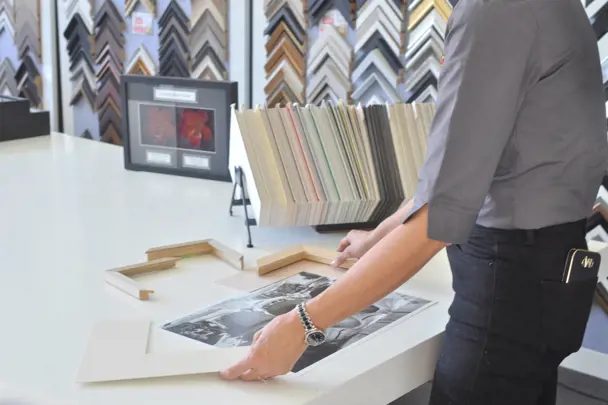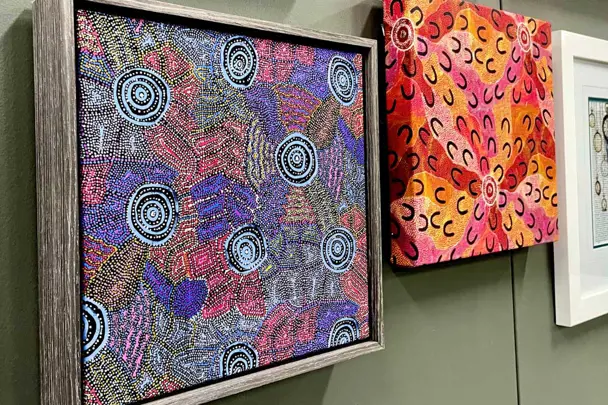Introduction
Collecting cards is a cherished hobby that allows enthusiasts to capture and preserve their most treasured collectables. Whether you're a seasoned collector or just starting out, the right framing and protection techniques can make all the difference when showcasing your collection.
In this comprehensive guide, we'll walk you through the steps to protect and display your card collection.
The Importance of Card Protection
Before we dive into framing and displaying your card collection, let's understand why card protection is crucial. The value of your collection and the memories it represents are at stake.
Why Trading Cards Need Protection
Trading cards, especially those that hold sentimental or collectable value, can be susceptible to various forms of damage over time. Some common reasons why trading cards need protection are from:
- Physical damage: Cards can be easily bent, creased or torn if not handled and stored with care. Accidents happen, and protective measures can prevent these mishaps from ruining your collection.
- Sunlight and UV damage: Prolonged exposure to direct sunlight or UV radiation can cause fading and discoloration of the cards, diminishing their visual appeal and value.
- Moisture and humidity: Moisture and high humidity levels can lead to mould growth, warping and paper deterioration. Protecting your cards against these environmental factors is crucial.
- Dust and debris: Dust and debris can accumulate on the card's surface, making them look unattractive and potentially causing abrasions or scratches.
- Ware and tear: Frequent handling can lead to surface wear, such as fingerprint smudges or friction-related damage.
Types of Damage to Trading Cards
To fully grasp the importance of card protection, it's essential to be aware of the various types of damage that can afflict your collection:
- Creases and bends: These are the most common types of damage, often occurring when cards are mishandled or shuffled without care.
- Edge wear: Over time, the edges of cards can become frayed and worn due to friction and handling.
- Surface scratches: Scratches on the card's surface can occur from contact with hard or abrasive surfaces.
- Fading and discoloration: Exposure to sunlight or UV radiation can cause the colours on your cards to fade or change, significantly impacting their aesthetic value.
- Water damage: Moisture can lead to water stains, warping and even complete deterioration of the card.
- Mold and mildew: In humid conditions, mould and mildew can grow on your cards, ruining their appearance and structural integrity.
How to Preserve Card Condition and Value
Now that you understand the potential risks to your card collection, it's time to take action to preserve their condition and value. Here are some key steps to consider:
- Climate control: Maintain a stable environment with controlled temperature and humidity levels to prevent moisture-related damage.
- Storage boxes: Invest in sturdy, acid-free storage boxes or binders to keep your cards organised and protected.
- Avoid excessive handling: Minimise the handling of your cards, especially those of significant value, to prevent wear and surface damage.

Maintenance and Cleaning
To ensure your cards retain their value and visual appeal, it’s crucial to implement regular maintenance and cleaning practices. We'll guide you through the steps to preserve your cards, prevent damage and maintain their pristine condition.
Regular Maintenance
Maintaining your trading card collection should become a part of your routine. Here's how to keep your cards in tip-top shape:
- Handle with care: Always handle your cards with clean hands, preferably using cotton or latex gloves to avoid fingerprints and oil transfer.
- Inspect for damage: Periodically inspect your cards for signs of wear, creases or any potential issues that may require immediate attention.
- Climate control: Monitor the temperature and humidity levels in your storage area to ensure they remain within the safe range for card preservation.
- Dust prevention: Regularly dust your display area and cards with a soft, clean microfiber cloth or use a can of compressed air to remove dust and debris.
- Rotate the collection: Periodically rotate the cards in your display to prevent overexposure of individual cards to light and environmental factors.
- Keep records: Maintain a record of your card collection, including their condition and any notable information, which can be valuable for insurance purposes or trading.
Cleaning Your Cards Safely
Cleaning your cards should be approached with caution to avoid any potential damage. Here's how to clean your cards safely:
- Testing in advance: Before attempting any cleaning method, test it on a less valuable card to ensure it doesn't cause damage.
- Surface cleaning: Use a soft, clean microfiber cloth to gently wipe the surface of the card. Avoid using excessive pressure to prevent surface abrasions.
- Sticky residue: If you encounter sticky residue or adhesive, use a gentle adhesive remover or a small amount of isopropyl alcohol on a cotton swab. Ensure that the alcohol does not touch the card's ink or coating.
- Avoid moisture: Do not use water or any liquid-based cleaning agents on your cards, as this can cause warping, staining or ink smudging.
- Air dusting: Use a can of compressed air to blow away any dust or debris without touching the card directly.
- Professional restoration: If you have exceptionally valuable or rare cards that require restoration, consult with professional card restoration services.
Storage Maintenance
Maintaining the condition of your storage solutions is equally important. Consider these storage maintenance tips:
- Regular inspection: Periodically check the condition of your storage boxes, card binders and display cases for any signs of wear, damage or contamination.
- Clean storage containers: Clean the interior of storage containers to remove dust and prevent any potential transfer of contaminants to your cards.
- Proper placement: Ensure that your storage containers are placed in a stable, secure location where they won't be subject to accidental damage.
Framing Your Card Collection
Framing your cards can be a wonderful way to turn your collection into a piece of art and provide practical protection. Whether you want to show off your Pokémon cards or other trading cards, framing is a beautiful option.
Here, we’ll delve into the benefits of framing your card collection, explore various types of frames suitable for trading cards and provide a step-by-step guide on how to frame your cards with care and precision.

The Benefits of Framing
Framing your card collection offers several significant advantages:
- Protection: A well-constructed frame shields your cards from dust, dirt, physical damage and UV rays, preserving their condition and longevity.
- Aesthetic appeal: Framing elevates your card collection from a stack of cards to a visually stunning display, turning your cherished memories into an art piece.
- Personalisation: Frames come in various styles, sizes and colours, allowing you to personalise the presentation of your collection to reflect your unique tastes and preferences.
- Easy to display: Once framed, your cards are easily accessible for viewing and you can change their arrangement or add new cards as your collection grows.
- Conversation starter: A framed card collection can serve as a conversation starter, allowing you to share your passion and memories with others.
Types of Frames for Trading Cards
When it comes to framing your card collection, you have several frame options to choose from, each with its unique features. Some of the common frame types suitable for trading cards include:
- Shadow box frames: Shadow boxes are deep frames that can hold multiple cards or even a complete set. They offer a three-dimensional display and are ideal for showcasing themed collections.
- Ready-made frames: Standard size picture frames with multiple openings can be used to frame individual cards or a set of cards. They are available in various sizes and materials.
- Acrylic display cases: Acrylic cases are transparent and offer the advantage of protecting your cards from dust and physical damage while allowing full 3-D visibility.
- Custom picture frames: For a truly personalised touch, consider having custom frames made to fit the exact dimensions and style you desire for your card collection.
Step-by-Step Guide on Framing Your Cards
Framing your cards requires careful attention to detail to ensure a professional and visually appealing display. Here's a step-by-step guide to help you frame your card collection:
Step 1: Gather your materials
- Trading cards
- Frame of your choice
- Acid-free mat board (recommended)
- Acid-free adhesive or mounting
- Cleaning supplies (microfiber cloth, compressed air, etc.)
Step 2: Select and arrange your cards
- Choose the cards you want to frame and arrange them in a visually pleasing manner. Consider themes, colours or special cards you want to highlight.
Step 3: Prepare the frame
- If using a standard frame, insert a mat board if desired. If using shadow boxes or acrylic cases, ensure they are clean and free of dust.
Step 4: Attach the cards
- Use acid-free adhesive or mounting to secure your cards in place. Make sure they are centred and properly aligned.
Step 5: Clean and close
- Carefully clean the inside of the frame or acrylic case to remove any dust and particles.
- Close the frame or case securely, ensuring that your cards are protected.
Step 6: Hang or display
- Hang the framed collection on your wall, place it on a shelf, or position it in your chosen display area to showcase your cards to their best advantage.
Displaying Your Card Collection
Once you've protected your cards, it's time to proudly display your collection. We'll guide you through setting up a dedicated display area, arranging your cards for maximum visual impact and creating the perfect ambiance with lighting and decor.
Setting Up a Display Area
Creating a designated display area for your trading card collection is the first step in sharing your passion with others and enjoying your cards to the fullest. Here's how to set up an attractive display area:
- Choose a focal point: Select a wall or shelf in your home or workspace where your collection will be the centre of attention.
- Consider the surroundings: Ensure that the area complements the style and decor of your space, making your collection an integral part of the overall ambiance.
- Clear the space: Remove clutter and distractions from the vicinity of your display area, allowing your cards to shine.
- Select display furniture: Invest in quality shelving, display cases or shadow boxes that fit the size and style of your collection.
The Art of Arrangement
Arranging your cards in an aesthetically pleasing manner is crucial to creating an eye-catching display. Consider the following tips:
- Theme-based arrangement: Organise your cards by theme, set or colour scheme to create a visually appealing narrative within your collection.
- Use card stands: Acrylic card stands can elevate individual cards or sets, adding dimension to your display.
- Create focal points: Highlight your most prized cards or sets in prominent positions within your display.
- Vary card angles: Play with the angles at which cards are displayed to add depth and visual interest.
- Rotate cards: Change the arrangement periodically to keep the display fresh and showcase different parts of your collection.
Lighting and Ambiance
Lighting and ambiance are also important to enhance the visual impact of your card collection. Here's how to create the perfect atmosphere:
- Lighting: Use well-placed, adjustable LED spotlights to illuminate your cards without causing damage. Avoid direct sunlight, as UV rays can harm your collection.
- Backdrops: Consider using coloured or patterned backdrops behind your cards to add depth and style to your display.
- Framing and borders: Use frames or borders to create a cohesive look and draw attention to your cards.
- Decor elements: Add decorative elements, such as custom artwork, themed collectibles or relevant memorabilia, to enhance the space.
- Interactive touch: If space permits, include interactive elements like magnifying glasses or information plaques for guests to learn more about your collection.
Other Ways to Protect Trading Cards
Beyond framing (our preferred option of course), there are various methods to safeguard your cards. We will explore the various methods to protect your trading cards, including the use of card sleeves and top loaders, the importance of climate control and effective storage solutions for your collection.
Card Sleeves and Top Loaders
Card sleeves and top loaders are essential tools for protecting your trading cards. These accessories offer an additional layer of defence against common sources of damage, such as dirt, moisture and physical wear. Here's how to use them effectively:
1. Card sleeves:
- Card sleeves are thin, transparent plastic covers designed to encase individual cards.
- · Select sleeves that fit your card size snugly without being too tight, ensuring the card doesn't move inside the sleeve.
- Keep your sleeves clean to prevent dust and debris from entering and replace damaged sleeves promptly.
2. Top loaders:
- Top loaders are rigid plastic holders that fully encase a card, offering superior protection against bending and creasing.
- Insert the card into the top loader, making sure it fits without excessive movement.
- Use a small piece of masking tape at the top to secure the card in place but be careful not to tape it directly to the card itself.
The Importance of Climate Control
Maintaining a controlled environment is crucial to protect your trading cards from environmental factors that can cause damage. Temperature and humidity are two key elements to monitor:
- Temperature: Keep your cards in a climate-controlled room. Extreme temperatures can lead to warping and damage, so avoid storing your cards in basements or attics.
- Humidity: High humidity can lead to mould and mildew growth, as well as card warping and deterioration. Low humidity can make cards brittle. Use a dehumidifier or humidifier to maintain ideal humidity levels.
- Sunlight exposure: Avoid displaying your cards in direct sunlight, as UV rays can cause fading and discoloration. Use UV-filtering glass or acrylic if your cards are displayed near windows.
Storage Solutions for Your Collection
Proper storage solutions are essential to keep your collection organised and protected. Consider the following options:
- Card binders: Acid-free card binders with plastic card pockets are excellent for storing a large collection of cards. Use dividers to keep your collection organised.
- Storage boxes: Sturdy, acid-free cardboard storage boxes are great for storing bulk cards. Ensure that the boxes are clearly labelled for easy identification.
- Acrylic display cases: For showcasing and protecting your most prized cards, consider clear acrylic display cases. These provide visibility while guarding against dust and physical damage.
- Silica gel packets: Place silica gel packets in your storage containers to help absorb excess moisture and maintain a dry environment.
- Regular inspection: Periodically inspect your stored cards for any signs of damage or issues with your storage solutions. This allows you to catch problems early and take corrective action.

Conclusion
Protecting and displaying your card collection is a labour of love that can bring joy for years to come. Whether you're interested in Pokémon card frames or other creative framing options, following our comprehensive guide will ensure that your cherished memories are safeguarded and showcased in the best way possible. Remember, each card in your collection tells a story, and with the right protection and framing, those stories can be cherished for generations to come. Start preserving your memories today!



